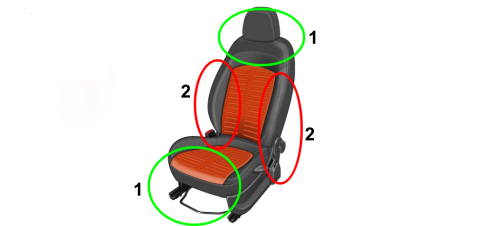323000557 - 7045 FRONT SEATS
INTRODUCTION
The seats are of vital importance in terms of comfort and safety: they are, in effect, the element that has to absorb the kinetic energy acquired by the body through the effect of stresses when cornering and during acceleration/deceleration.The front seats, in the front part of the seating area, have an excellent structure for anti-submarining, to prevent the body sliding forward under the seat belt in the case of severe frontal impacts. This also contributes in great measure to limiting injury to the abdomen and femur by reducing the body''s forward acceleration.The vehicle is equipped with up-to-date devices to ensure the achievement of lasting comfort. These were designed on conjunction with the CONI Sport Medicine Institute biomechanical department.To enhance vibrational comfort and especially the absorption of vibrations produced from the road surface (e.g.: tram lines, etc.) the seats are equipped, in the area of the gluteus ischium-coccyx, with an efficient spring system with a flexible pack made up of thin steel wires coated in plastic and secured by two clips to the perimeter frame;To improve back support, the vehicle has a modern support system for the lumbar region specially designed to adapt fully to the back and support it tirelessly thanks to its considerable extension and operating range.In addition the driver''s seat is height adjustable by means of a ratchet lever with extremely reduced operating loads and is very easy to use.The lengthwise sliding guides have a travel of 230 mm and an operating element. They are a slight angle of 3° to raise the seat slightly when it is moved forwards.The combination of the seat height adjustment with the height and axial adjustment of the steering wheel makes it possible to produce the optimum driving position for an extremely wide range of drivers.The adjustment of the backrest angle is continuous and is regulated by a knob located in the area of the seat towards the outside of the passenger compartment.Depending on the version, the electrically operated adjustment of the driver''s lumbar support is fitted as standard or available as an optional extra, through the regulation of a mechanism that varies the bearing capacity of the backrest lumbar area.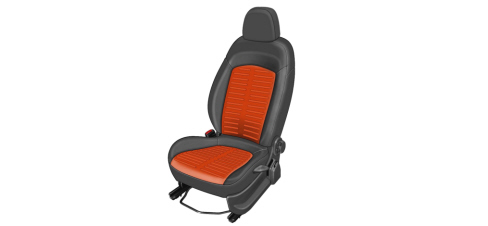
Specifications
Distance between the centres of the guides 410 mm; travel 230 mm;Continuous backrest adjustment device with control knob;Folding over to table;Head restraint with Z adjustment;Driver''s seat raising device with ratchet lever;Side bag (optional);Passenger backrest with optional oddments pocket;Passenger presence device SBR;Adjustable lumbar support.Lengthwise adjustment (guide release)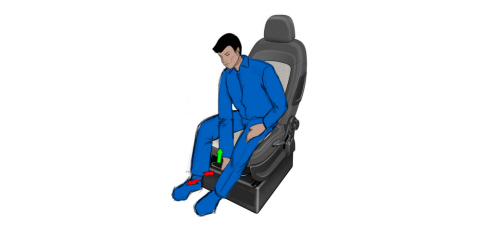
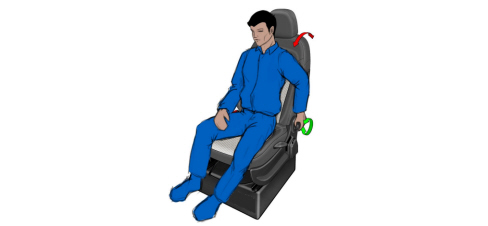
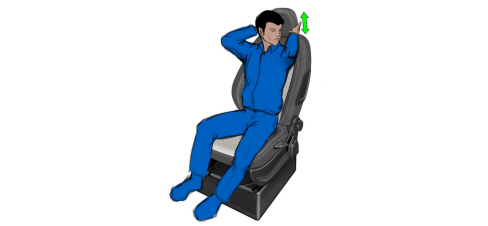
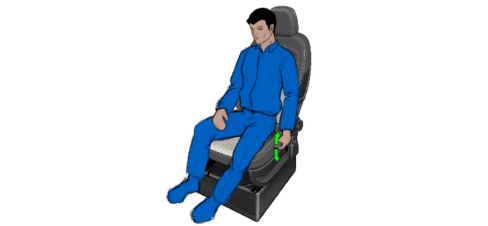
Structure
The structure of the front seats has been designed to assist and complete the protection offered by the occupant protection system. Two metal bars, located at the front and rear under the front seat cushion, maintain the correct support of the occupant in a frontal impact and minimize the distortion of the seat in side impacts. The front crossmember and the configuration of the seat prevent the passengers from sliding underneath the seat belt known as the anti-submarining effect.The bilateral type robust hinging between the backrest and the base of the cushion structure has been designed to ensure optimum retention of the occupant in the case of rear impacts at low speed and, in conjunction with suitably designed side panels, gradually absorb the impact energy from rear collisions at high speed in a controlled manner.
Lumbar support
There is an electrically operated device for the lumbar adjustment of the driver''s seat. The backrest lumbar area can be adjusted using the control on the inside of the seat.
Head restraint
In rear impacts at low speed the most common injury is whiplash. To reduce the risk of this injury to a minimum, the vehicle is fitted with head restraints capable of retaining the head in the case of rear impacts preventing irregular or excessive stresses to the cervical group of the vertebral column. The size of the head restraint in relation to the position of the neck and the stiffness of the head restraint are therefore important with regard to the performance of this function.The following goals were set for this vehicle:- To minimise the distance between neck and head restraint- To ensure the adjustment range was sufficient to accommodate even very tall people.- Great stability during impact.The front head restraints can either be fixed or equipped with a height adjustment device with a fastening to ensure stable and optimum positioning in all intermediate positions.The adjustment control does not have to be released to raise the head restraint.To lower the head restraint, on the other hand, it must be released using the button on the bush. When the head restraint button is released, it will lock in the nearest position.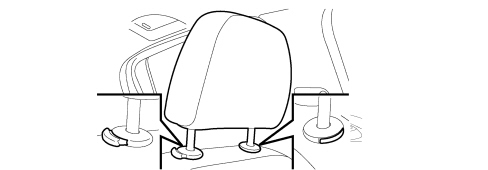
Anti-whiplash device
The adjustable head restraint does not offer sufficient guarantee of being in the correct position when an accident occurs. To overcome this problem and increase safety in the event of rear impact, an antiwhiplash device is available as an option. This reduces the distance between head and head restraint following an impact.The seat is fitted with a sprung device that allows the head restraint to be brought closer to the occupant''s head in the event of rear impact and consequent pressing of the back against the backrest. This limits damage due to whiplash.
Side bag
A chest-pelvis side bag module is installed on the outside of the backrest inside the trim. For more information refer to: See descriptions 5580C AIR BAG SYSTEM| During seat removal, refitting and movement, avoid grasping the sides of the seat. |
